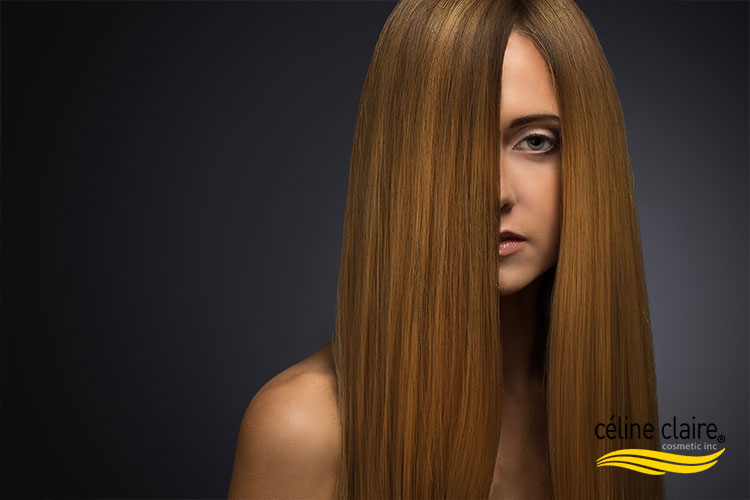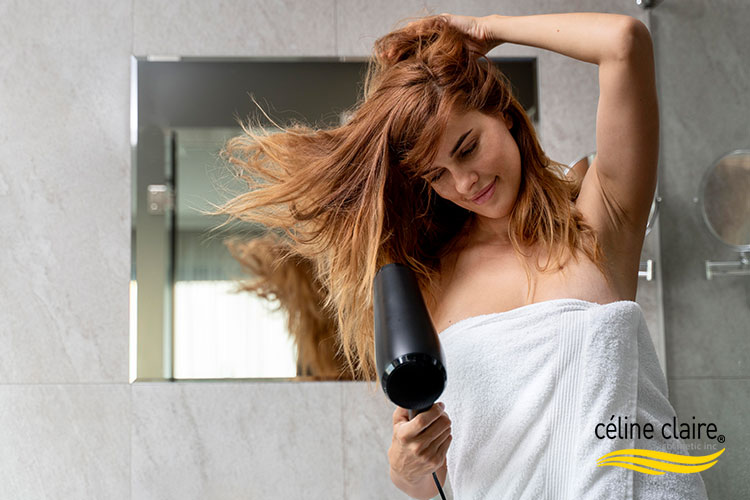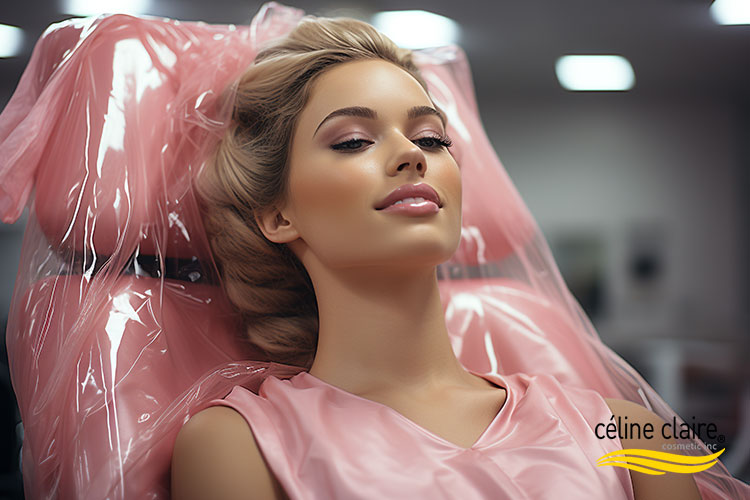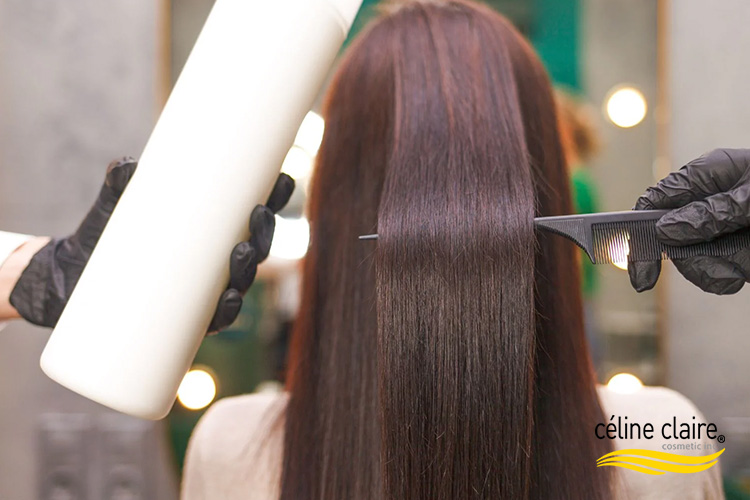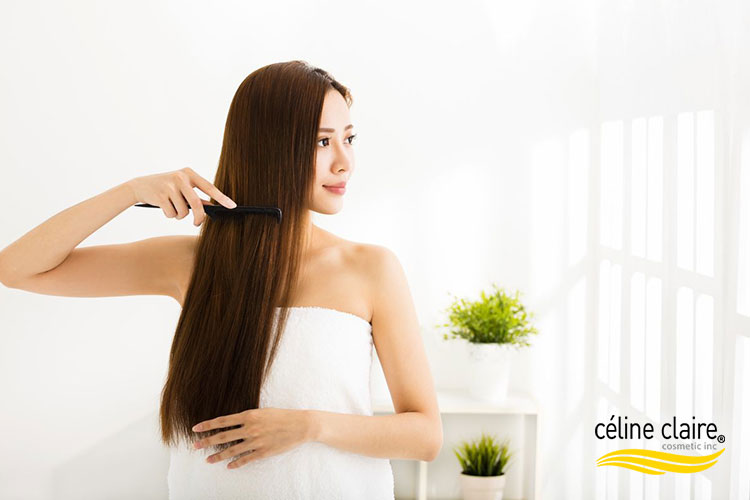
What are the Keratin Hair Treatment Pros and Cons?
If you’ve spent years battling frizzy, unmanageable hair that won’t remain smooth no matter what products or style procedures you employ. You must understand that mornings are a race against time as you fight with your brushes and flat iron, just to go outdoors and see your sleek strands puff up in the humidity.
If this circumstance seems similar, you are not alone. For many women, the pursuit of silky, manageable hair is an ongoing battle. But what if there was a hair treatment that claimed to convert your hair into the smooth, lustrous locks you’ve always wanted?
Keratin hair treatment is a trendy remedy that has been making waves in the beauty industry. Keratin hair treatments, also known as the miraculous cure for frizz, have become the go-to alternative for those looking to attain flawless smooth hair. But, like with any hair treatment, it’s crucial to assess the benefits and drawbacks before jumping in.
In this post, we’ll go over everything you need to know about keratin hair repair treatments, including what they are and the pros and cons. By the conclusion, you’ll have a better idea of whether this treatment is suitable for your hair type and lifestyle.
What is Hair Keratin?
Keratin, a fibrous protein that forms the structural foundation of your hair, much like the beams and supports that hold up a house, is the key ingredient that gives your hair its strength, elasticity, and resilience. To truly understand the impact of keratin hair treatments, you must first understand what keratin is and why it is so important for your hair.
Consider your hair to be a beautiful, intricate tapestry, with each strand woven together with keratin threads.
However, much like a house, your hair’s keratin levels can diminish over time owing to a variety of circumstances. Heat styling, chemical hair treatments, and environmental damage are similar to the storms and pressures that weaken your house’s beams. As the keratin in your hair decreases, you may find your once-strong strands becoming weaker, more prone to breakage, and harder to manage.
This is where keratin hair treatments come in. These treatments aim to rebuild your hair’s keratin, fortifying its structure and restoring its natural strength and luster. Consider it a hair restoration treatment that rejuvenates your hair by smoothing out frizz, locking in moisture, and giving it a new lease of life.
While keratin hair treatments can be quite effective, it’s crucial to understand that not all treatments are the same. The success of a keratin treatment is determined by a variety of factors, including the precise formulation used and the state of your hair before treatment. Some treatments may have larger quantities of keratin, making them more suited to specific hair types or desired outcomes.
As we look deeper into the pros and cons of keratin hair treatments, it’s important to remember that what works for one person might not work for another. Understanding your hair’s specific requirements and how keratin interacts with them is the first step toward making an informed choice about whether this hair treatment is good for you.
What Are the Benefits of Hair Keratin?
When it comes to keratin hair treatments, the advantages are frequently the first thing that people notice. Who wouldn’t want to have smoother, shinier, and more manageable hair? But let’s look deeper into what makes these advantages so tempting, particularly for those who have been dealing with their hair for years.
Frizz Reduction and Smoothing
One of the most desired features of a keratin hair treatment is its ability to control frizz and create a sleek, silky appearance. Imagine waking up in the morning to find your hair smooth, silky, and ready to go, rather than battling a halo of frizz. The keratin in the treatment smoothes down the hair cuticle, which is your hair’s outermost layer. When the cuticle is flat and sealed, your hair looks smoother and reflects more light, giving it a glossy, salon-finished appearance.
Improved Manageability
Keratin hair treatments make hair much easier to handle on a daily basis. If you’ve ever spent hours attempting to blow-dry or flat iron your hair straight, only to have it return to its natural form within hours, you’ll understand the frustration. With a keratin treatment, your hair becomes more cooperative, allowing you to save style time while still achieving the desired appearance.
Strength and Resilience
Beyond looks, one of the most significant advantages of keratin hair treatments is their ability to strengthen your hair. As previously said, keratin is the protein that provides your hair its structure. When your hair is damaged—whether due to heat treatment, chemical procedures, or environmental exposure—the keratin is typically weakened or pulled away.
Long-Lasting Results
Keratin hair treatments have another significant advantage: they last a long time. Unlike some other hair treatments, which require regular reapplication, the results of a keratin treatment can last for many months, depending on your hair type and how well you care for it. This makes it an appealing alternative for those seeking a semi-permanent solution to their hair problems without the need for regular maintenance.
Versatility for Different Hair Types
Finally, one of the less well-known but equally significant advantages of keratin hair treatments is their adaptability. While they are frequently advertised to people with frizzy or curly hair, these treatments can help a variety of hair types. Whether your hair is thick or fine, wavy or straight, a keratin treatment may be adjusted to your unique requirements.
What Are the Disadvantages of Hair Keratin?
While the advantages of keratin hair treatments are undeniable, it is also crucial to evaluate the possible disadvantages. Keratin treatments, like any other cosmetic treatment, have downsides, which you should be aware of before deciding whether this hair treatment is good for you.
Formaldehyde Concerns
One of the most common concerns about keratin hair treatments is the presence of formaldehyde, a chemical that is frequently employed throughout the treatment procedure. Formaldehyde helps to lock keratin into the hair, but it is also a recognized carcinogen, which means that inhaling significant amounts of it can be dangerous.
Cost
Keratin hair treatments may be fairly costly, particularly when compared to other hair treatments. Depending on where you go and the therapy you pick, you may end up spending several hundred dollars on a single session. This pricing does not include suggested aftercare treatments, like as sulfate-free shampoos and conditioners, which might increase the entire cost.
Temporary Effects
A keratin hair treatment can produce long-lasting effects, but they are not permanent. The benefits will eventually decrease as your hair grows and the keratin fades off. This implies that if you want to keep the smooth, frizz-free appearance, you’ll need to repeat the treatment every few months.
Potential for Damage
Although keratin hair treatments are intended to strengthen and restore hair, they can potentially cause harm if not administered properly. The extreme heat applied during the treatment procedure may cause your hair to become dry or brittle, especially if it is already damaged or fragile.
Not Suitable for All Hair Types
Finally, keratin hair treatments are not for everyone. If you have fine, thin hair, you may notice that the treatment leaves it limp and lifeless rather than smooth and shiny. Similarly, if your hair is severely damaged, a keratin treatment may not be the ideal solution since it may worsen the damage rather than restore it.
Who Is Hair Keratin Suitable For?
Keratin hair treatments can be revolutionary, but they aren’t always applicable. To achieve the greatest results, determine whether this hair treatment is appropriate for your hair type, lifestyle, and overall hair objectives.
Ideal Candidates
Keratin hair treatments are especially useful for those who have frizzy, curly, or unruly hair that is difficult to maintain. If your hair puffs up in humid weather, or if you spend a lot of time blow-drying and flat ironing it to get a smooth look, keratin can help. The treatment smoothes the hair cuticle, reducing frizz and making your hair more manageable even under less-than-ideal weather.
Furthermore, those with damaged or chemically treated hair might benefit from keratin hair restoration treatments. Keratin infusion strengthens and rebuilds hair structure, providing a restorative impact that can enhance your hair’s general health and look.
Hair Types That May Not Benefit
Keratin treatments can be effective for some hair types, but they may not be the best option for everyone. people with fine or extremely thin hair may feel that the treatment leaves their hair overly flat or lifeless, as the smoothing effect can weigh down hair that is already low in volume.
In these circumstances, you may want to look into various hair treatments that might provide body and structure without flattening your hair.
Furthermore, if your hair is very oily, you should think carefully about getting a keratin treatment. The additional smoothness and shine might make greasy hair appear even greasier, necessitating more frequent washing and reducing the treatment’s lifespan.
Lifestyle Considerations
When considering if a keratin treatment is best for you, you should examine your lifestyle as well as your hair type. For example, if you frequently swim in chlorinated pools or saltwater, you may discover that these factors limit the longevity of your therapy.
Chlorine and salt may take keratin from your hair, leaving it frizzy and unmanageable sooner than intended.
Similarly, if you participate in intensive physical activity that causes you to sweat much, this might have an impact on the treatment’s longevity.
Sweat, like water, can damage your hair’s keratin connections, causing the treatment to fade faster. In these circumstances, you may want to assess the benefits against the expense and effort necessary to preserve the results.
Allergies and Sensitivities
Finally, if you have a sensitive scalp or are prone to allergic reactions, you should carefully analyze the chemicals in any keratin treatment you are considering.
Certain treatments, particularly those using formaldehyde, may produce discomfort or an allergic reaction. If you are concerned about this, check with your stylist beforehand and potentially undertake a patch test to confirm the treatment is safe for you.
Hair Keratin Treatment Process
Understanding the procedure for a keratin hair treatment might help you plan for what to expect during and after the treatment. This might also help you decide whether this form of hair treatment is compatible with your current hair care routine and expectations.
Initial Consultation
Before receiving a keratin hair treatment, you must talk with your stylist. This appointment allows you to talk about your hair type, concerns, and objectives, as well as any possible dangers or side effects. Your hairdresser can also prescribe the best keratin treatment for your hair, whether conventional or formaldehyde-free.
Preparation and Application
The keratin hair treatment method usually starts with a thorough cleaning of your hair. Your stylist will use a clarifying shampoo to eliminate any buildup of oils, dirt, and styling products, allowing the keratin to nourish your hair more efficiently.
After shampooing, your hairdresser will apply the keratin solution to your moist hair in sections. This stage of the procedure might take anywhere from 30 minutes to an hour, depending on the length and thickness of your hair.
After the solution is applied, your hair is usually blow-dried and flat-ironed to seal the keratin into the hair shaft. The heat from the flat iron is essential because it activates the keratin and attaches it to your hair.
Post-Treatment Care
Following the treatment, you may be asked not to wash your hair for 48 to 72 hours to enable the keratin to fully set. During this time, it’s also best to avoid tying your hair back or wearing hair accessories, since these might leave dents in your hair that may remain permanent until the treatment disappears.
When you can wash your hair again, make sure to use sulfate-free shampoos and conditioners to keep the treatment working. Sulfates can remove the keratin, causing the treatment to wear off faster. Regular conditioning is also essential for keeping your hair moisturized and silky, which complements the advantages of keratin.
Maintenance and Longevity
A keratin hair treatment normally produces benefits that last three to six months, depending on your hair type and how well you maintain the treatment. To extend the life of your treatment, restrict your usage of heat styling equipment and always apply a heat protectant while styling your hair.
Furthermore, regular deep conditioning treatments may help keep your hair in top condition, allowing you to get the full advantages of your keratin treatment for as long as possible. If you find that your hair is losing its smoothness or frizz control, try obtaining a touch-up treatment to restore the effects.
Introducing High-Quality Keratin Hair Products
To get the most out of your keratin hair treatment, use high-quality hair care products. Here are some top-rated keratin-infused products to help you keep your hair smooth and frizz-free.
- Celine Claire Sulfate-Free Keratin Shampoo and Conditioner
The Celine Claire is known for its gentle, sulfate-free formulas, which are ideal for maintaining the results of a keratin hair treatment. The shampoo washes without removing natural oils or keratin, while the conditioner deeply hydrates your hair, leaving it silky, smooth, and manageable.
- CHI Keratin Silk Infusion
This leave-in treatment is ideal for adding extra strength and shine to your hair. Infused with keratin and silk proteins, it helps to repair damaged hair, making it smoother and more resilient. It’s perfect for use on damp hair before blow-drying, adding a protective layer that helps to extend the life of your keratin hair repair treatment.
- Brazilian Blowout Acai Anti-Frizz Shampoo and Conditioner
If you’re looking for a set that’s specifically designed for post-keratin treatment care, the Brazilian Blowout Acai range is a great choice. This duo works to nourish your hair while maintaining smoothness and shine. The anti-frizz formula helps to extend the results of your keratin treatment, making it a favorite among women with thick or curly hair.
Conclusion
Keratin hair treatments have several benefits that can greatly improve the appearance, texture, and manageability of your hair. This hair treatment has the potential to be a game changer for many women, eliminating frizz while also adding shine and power. However, it is critical to balance these advantages against the possible downsides, such as expense, maintenance, and the transient nature of the effects.
If you’re thinking about getting a keratin treatment, talk to your stylist about your hair objectives, lifestyle, and any concerns you have. With the correct information and preparation, you can make an informed decision to obtain the healthy, attractive hair you want.
FAQ
Can I color my hair after a keratin treatment?
It’s generally recommended to wait at least two weeks after a keratin treatment before coloring your hair. This allows the keratin to fully set and ensures that the color takes evenly.
How often can I get a keratin treatment?
You can get a keratin treatment every 3-6 months, depending on how your hair responds and how well you maintain the treatment. Overdoing it can lead to buildup and potential damage, so it’s best to follow your stylist’s advice.
Is keratin treatment safe during pregnancy?
It’s advised to avoid keratin treatments during pregnancy, especially those that contain formaldehyde. If you’re pregnant, consult with your doctor and stylist for safer alternatives.
Will my hair go back to its natural state after the keratin wears off?
Yes, once the effects of the keratin treatment wear off, your hair will gradually return to its natural texture. There won’t be any permanent changes to your hair’s structure.
Can I swim in the pool or ocean after a keratin treatment?
It’s best to avoid swimming in chlorinated pools or saltwater right after a keratin treatment, as these can strip the keratin from your hair. If you do swim, consider wearing a swim cap or applying a leave-in conditioner to protect your hair.
How long should I wait to wash my hair after a keratin treatment?
It’s typically recommended to wait 72 hours (3 days) before washing your hair after a keratin treatment. This allows the keratin to fully bond with your hair for maximum effectiveness.
Can I use regular shampoo and conditioner after a keratin treatment?
No, it’s important to use sulfate-free shampoos and conditioners after a keratin treatment. Sulfates can strip the keratin from your hair, reducing the longevity of the treatment.
Does keratin treatment work on all hair types?
Yes, keratin treatments can be effective on a wide range of hair types, including curly, wavy, and straight hair. However, the results may vary depending on your hair’s texture and condition.
Can keratin treatments help with hair thinning or hair loss?
Keratin treatments primarily work on the surface of the hair to smooth and strengthen it. They do not address the underlying causes of hair thinning or hair loss. If you’re experiencing significant hair loss, it’s best to consult a dermatologist or trichologist.
How can I prolong the effects of a keratin treatment?
To prolong the effects, avoid washing your hair too frequently, use a sulfate-free shampoo and conditioner, and minimize the use of heat styling tools. Also, consider sleeping on a silk or satin pillowcase to reduce friction and maintain the smoothness of your hair.

